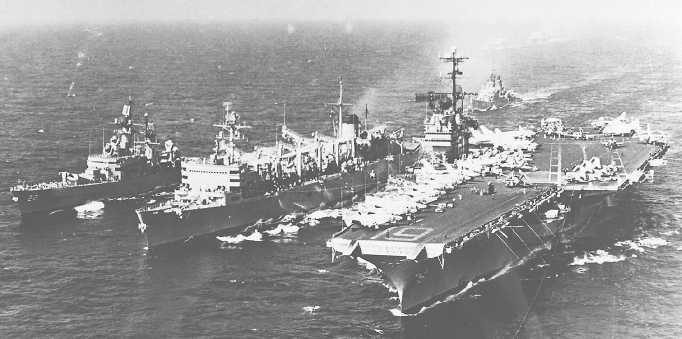| |
134.198
Figure 19-22 .-A multiple-product AOE conducting underway replenishment.
in 90 seconds. On a normal UNREP operation
(carrier to port, destroyer to starboard), the deck
force can transfer 300 tons of cargo per hour. The
AOE carries over 5 million gallons of petroleum
products, 1,600 tons of ammunition, and 500 tons
of dry and refrigerated stores in addition to
miscellaneous general cargo and mail.
Material Support Ships
Material support ships include repair ships
(ARs), destroyer tenders (ADs), and submarine
tenders (ASs). These ships provide repair and
maintenance functions that are beyond the capa-
bilities of other ships’ facilities or personnel. They
are
floating
shops
with
skilled
workers
representing a wide variety of mechanical and
electrical trades. These ships supply parts and the
personnel to install them and skilled workers who
can repair many delicate optical and navigational
instruments. They also provide personnel who can
do underwater cutting and welding, engine and
hull repairs, machine work, and electronic and
electrical repairs. These ships have foundries,
forges, and many types of machine tools. They
have instrument shops, carpentry shops, boat
shops, and boat-engine shops. They also have
medical and dental facilities.
In wartime the function of material support
ships is to operate in advance areas and restore
the fleet to fighting trim after suffering battle or
other damage. In peacetime their function may be
less apparent, since a shipyard or some other
permanent base could do the work of these ships
as efficiently. However, the Navy must maintain a
nucleus of ships and personnel ready for any
emergency.
SUMMARY
The U.S. Navy has hundreds of vessels ranging
from small tugboats to huge aircraft carriers. You
cannot be expected to know all of the
characteristics of each one, but you should be able
to recognize the type of ship you see and have an
understanding of its mission.
In this chapter you have been introduced to
many of the ship types operated by the Navy. You
have also been given some of the characteristics of
these ships, including size, armament, manning,
and various other features. This information
should enable you to differentiate between the
different ship types and characteristics.
19-21
|

